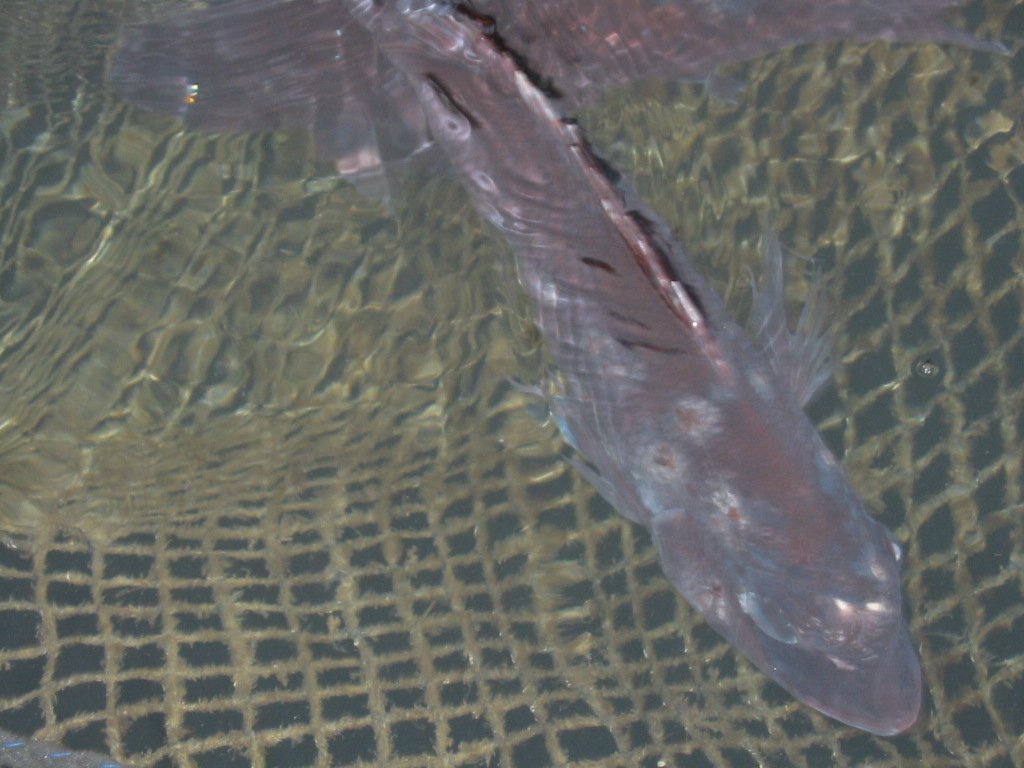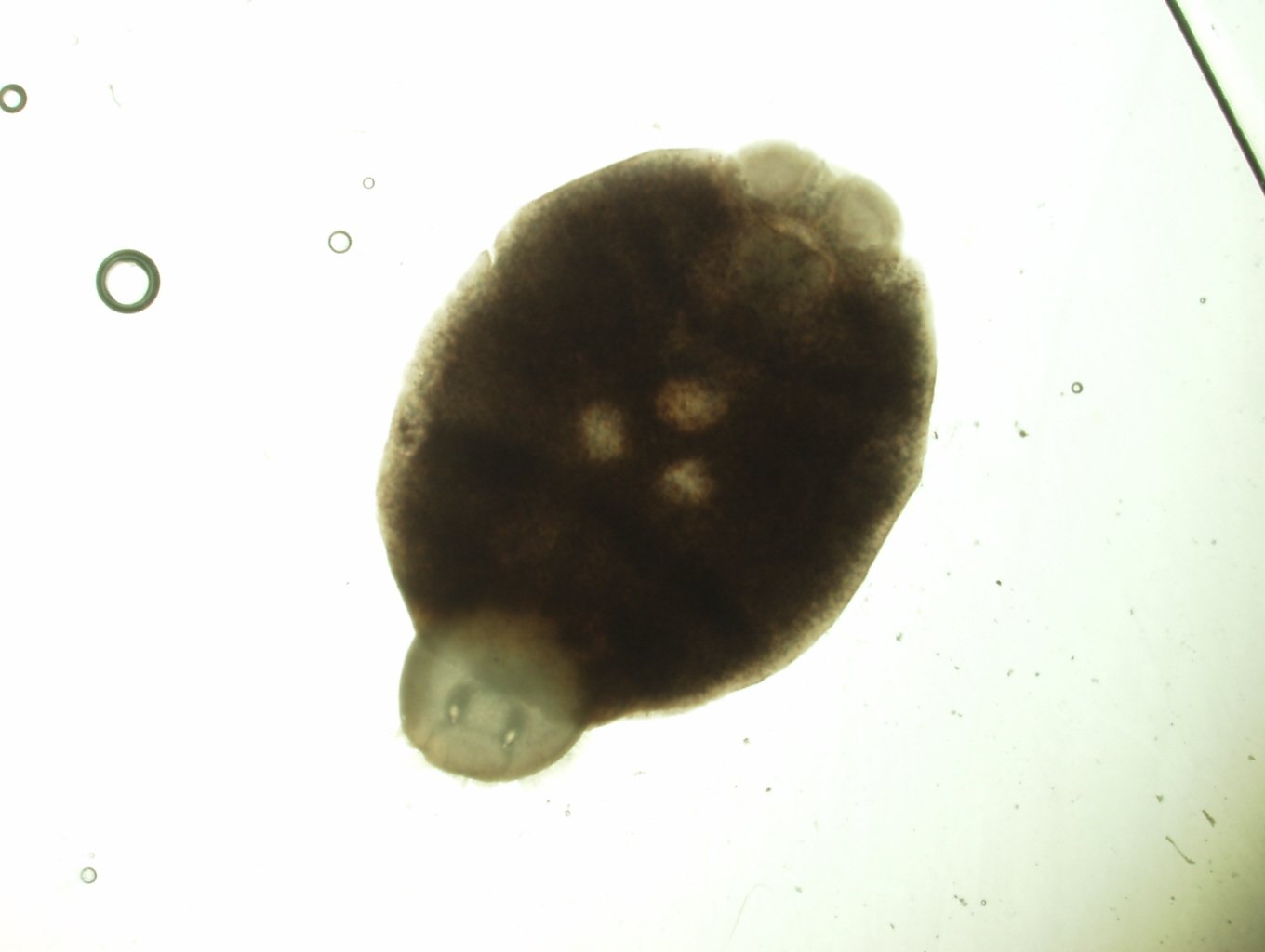
| Parasite | Benedenia sekii |
|---|---|
| Taxonomy | Plathyhelminthes, Monogenea, Monopisthocotylea |
| Hosts | Red sea bream (Pagrus major), squirefish (Chrysophrys auratus) |
| Infection site | Body surface |
| Clinical sign | Red-brown parasites are observed on the body surface. Wounded lesions are seen (Fig. 1). |
| Parasitology | Adult parasite is flat and 3-6 mm in length. The parasite attaches to the host by a haptor at the posterior end and a pair of suckers at the anterior end. The parasite exhibits reddish color because it accumulates pigments of the skin of red sea bream (Ogawa, 2006). |
| Pathology | Secondary infection occurs since bacteria invade through the injury. |
| Health hazard | Since this parasite is not infectious to human, it is harmless in food hygiene. |
| Diagnosis | Check the morphology of the parasite under a flattened preparation. |
| Other information |
This disease occurs in red sea bream farms less frequently compared to the disease of Benedenia seriolae in yellowtail farms. The reason is unknown. |
| References | Ogawa, K. (2006): Skin fluke infection (Benedeniosis). New atlas of fish diseases (eds. by Hatai K. and K. Ogawa), Midori Shobo, p. 182. (In Japanese) |


Fig. 2. Benedenia sekii
Fig. 1. Several injuries caused by skin fluke are observed on the
skin of cultured red sea bream.
(Photos by O. Murata)